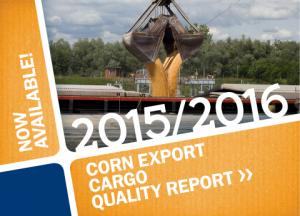The average aggregate quality of U.S. corn as it is assembled for export early in the 2015/2016 marketing year was better than or equal to U.S. No. 2 on all grade factors, according to the U.S. Grains Council’s (USGC’s) recently released Corn Export Cargo Quality Report.
Important findings from the newly-released report includes:
- The average test weight of samples was 57.3 pounds per bushel (73.7 kilograms per hectoliter), which is lower than last year. However, 95 percent of this year’s samples were found to be within the range for U.S. No. 1 grade corn, indicating overall good quality.
- The samples had a similar broken corn and foreign material (BCFM) rate as last year’s samples and were within the range for U.S. No. 2 grade corn.
- The samples showed lower levels of total damage than in 2014/2015, with 99 percent within the range for U.S. No. 2 grade.
- There was negligible observed heat damage, indicating good management of drying and storage of corn throughout the market channel.
- All of the export samples tested below the U.S. Food and Drug Administration’s (FDA’s) action level of 20 parts per billion (ppb) for aflatoxins.
- All of the corn export samples tested below the U.S. FDA’s advisory levels for a mycotoxin known as DON (deoxynivalenol).
“These annual quality reports have become a cornerstone for our international programming efforts,� said USGC President and CEO Tom Sleight.
“We use these reports to build the confidence of our export customers in the availability and quality of U.S. corn through presentations and one-on-one meetings to roll these reports out around the globe. Already we have plans to take this report to Latin America, Southeast Asia and the Middle East and North Africa.�
When reviewed alongside the Council’s 2015/2016 Corn Harvest Quality Report, potential buyers can see the evolution of corn quality from harvest to export and make more informed buying decisions.
“These reports are crucial for buyers around globe,� Sleight said. “They provide reliable, transparent information on the physical and chemical characteristics that influence purchasing decisions about commodity corn.�
This year’s report is based on 408 yellow commodity corn samples collected from corn export shipments as they underwent the U.S. government-licensed export sampling and inspection process.
The report covers both waterborne and rail export cargoes with results reported both for the entire United States and with details from three regions covering the bulk of U.S. corn exports: the Gulf, Pacific Northwest and Southern Rail.
Click here to view a PDF of the 2015/2016 Corn Export Cargo Quality Report.


